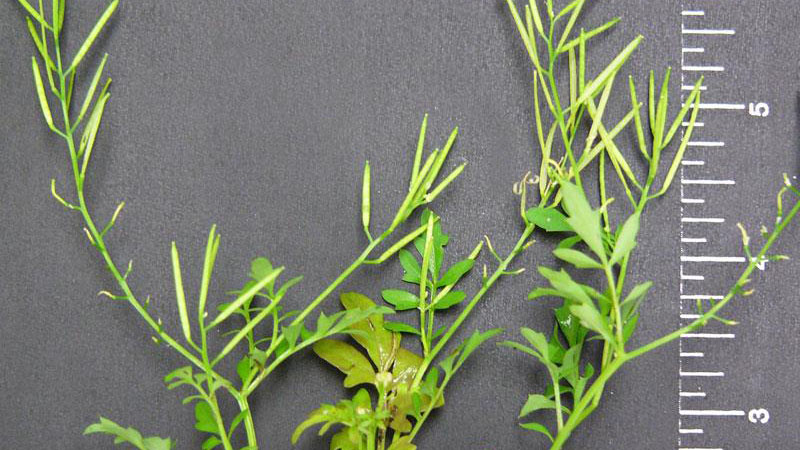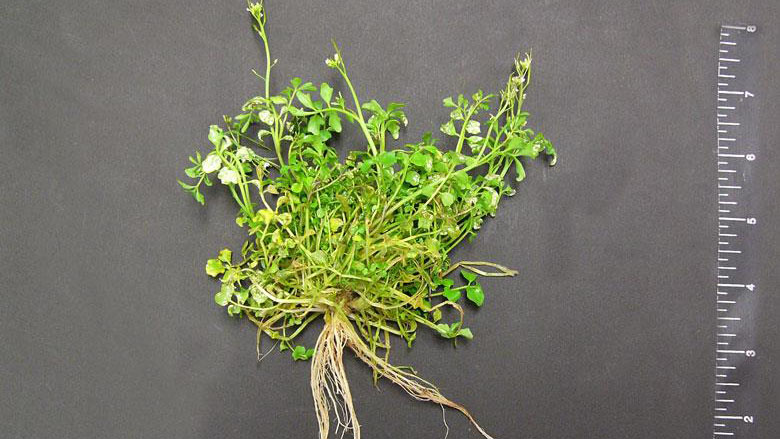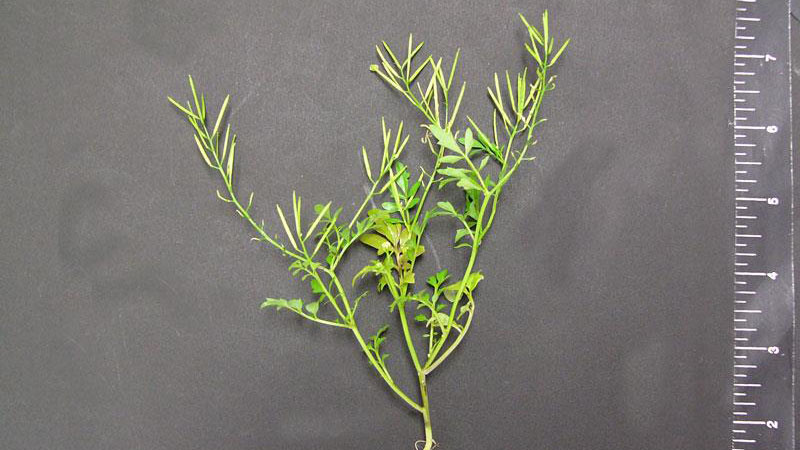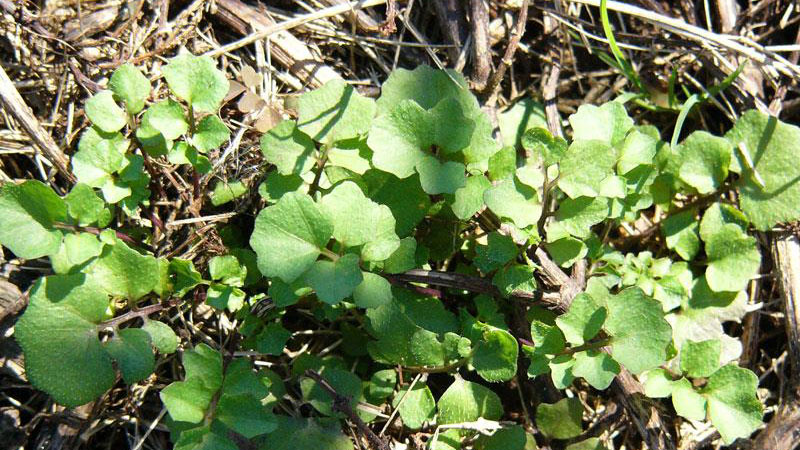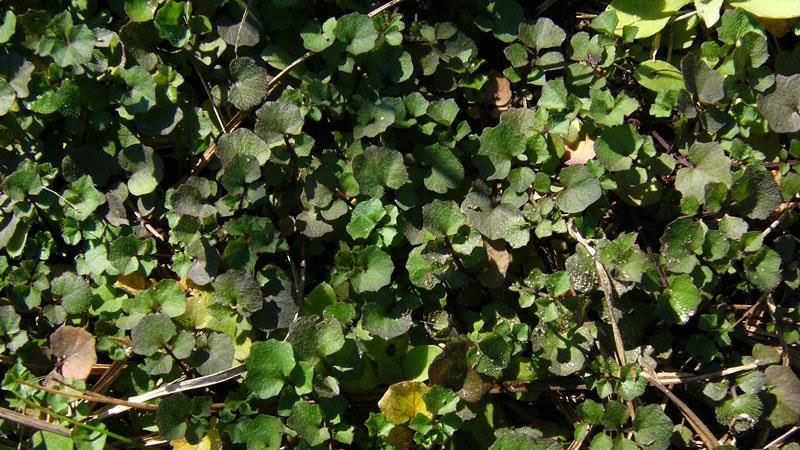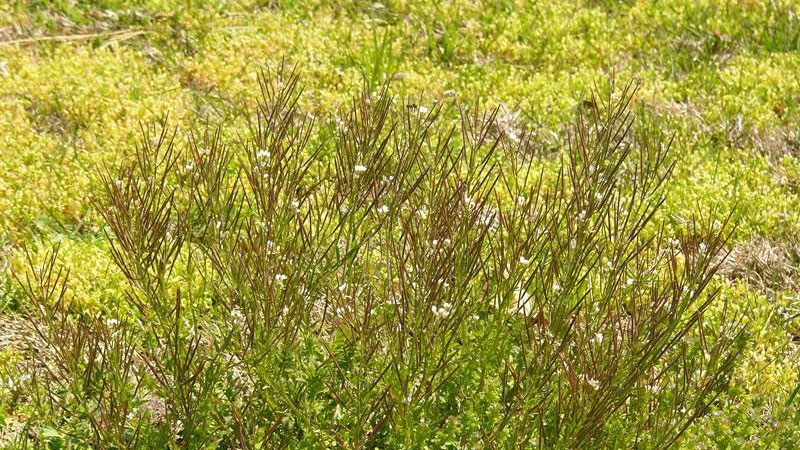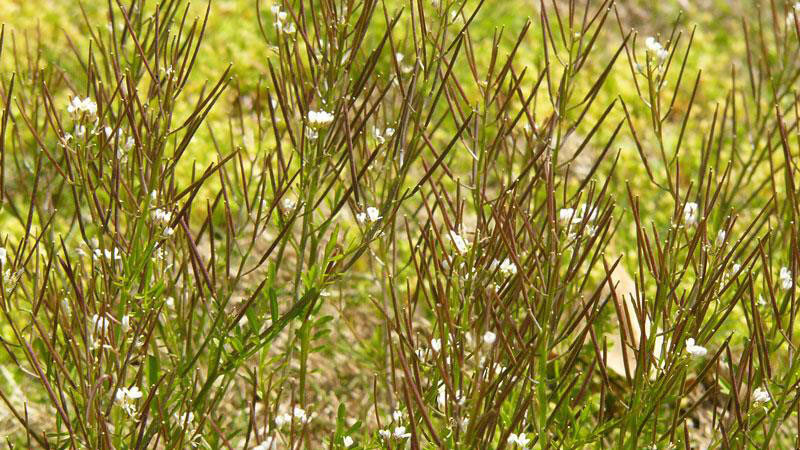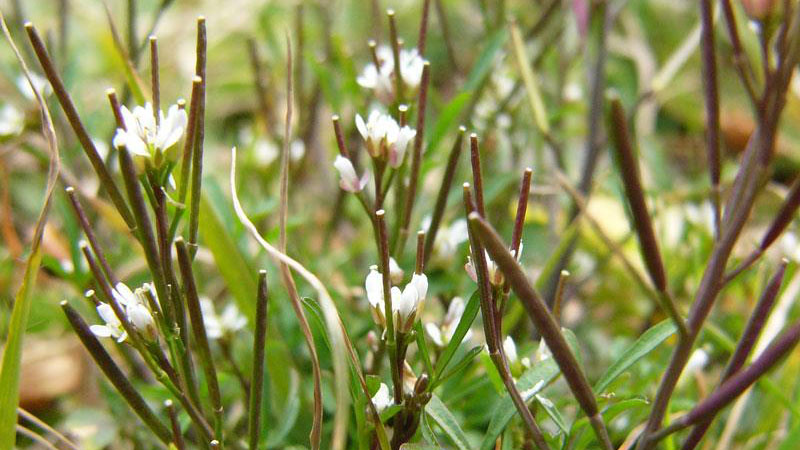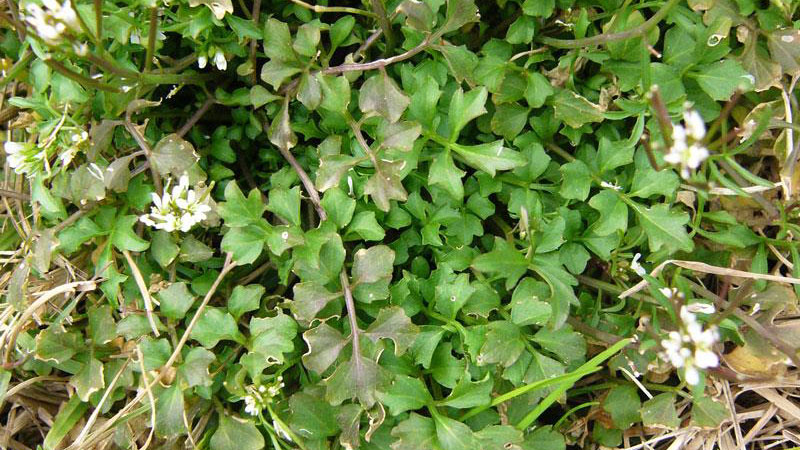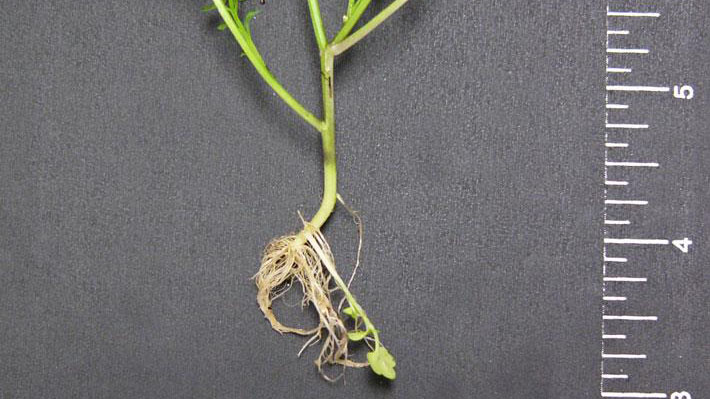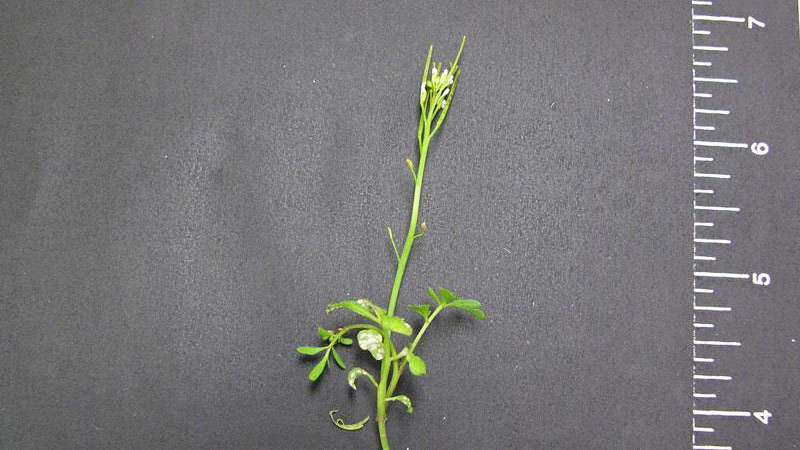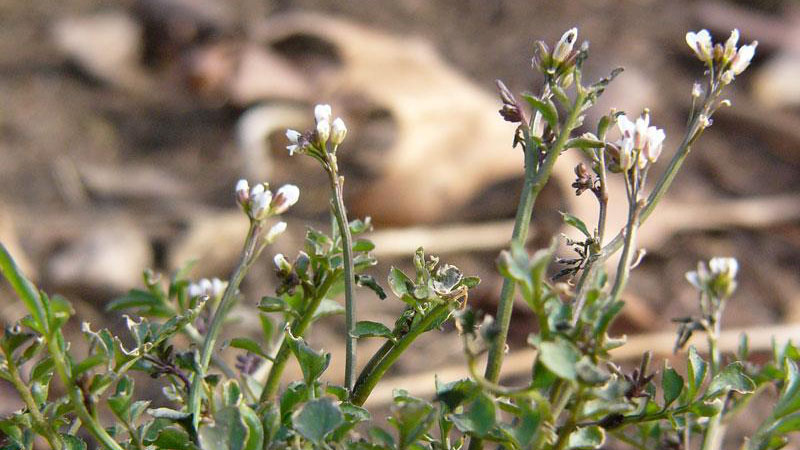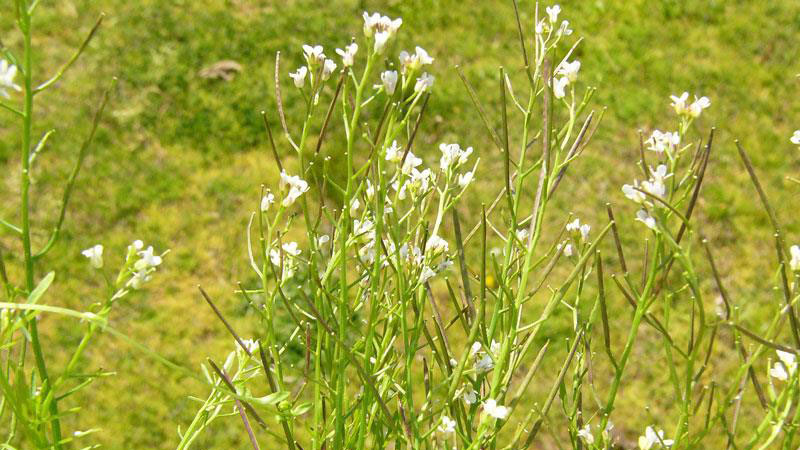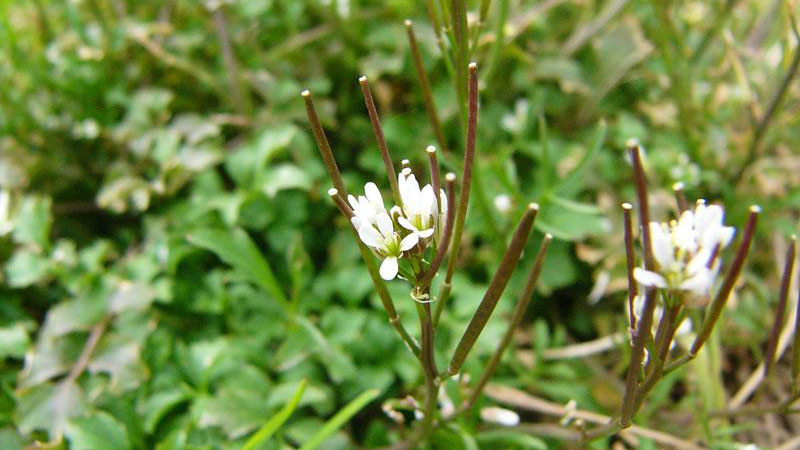Description
Hairy bittercress (Cardamine hirsuta) is a winter or summer annual weed (depending on location). Stems can be 3-9 inches long, and the leaves are mostly on the lower portion of the stem in a basal rosette. Leaf margins are deeply lobed. Leaves at the base of the plant are larger than the leaves at the top of the plant. Small hairs can be found at the base of the leaf as well as on the top of the leaf surface. Flowers are small and white. Small round fruits (capsules) develop at the ends of each branch.
Cultural Control
Winter annual broadleaf weeds germinate in the fall or winter and grow during any warm weather, which may occur in the winter, but otherwise remain somewhat dormant during the winter. They resume growth and produce seed in the spring and die as temperatures increase in late spring and early summer. They quickly invade thin turf areas especially where there is good soil moisture. Shade may also encourage growth. Many have a prostrate growth habit and are not affected by mowing. A dense, vigorous turf is the best way to reduce the encroachment of winter annual weeds. First, select adapted turfgrass cultivars for your area and then properly fertilize, mow, and water to encourage dense growth.
Species Data
- GROWTH SEASON / LIFE CYCLE
- summer annual or winter annual weed
- GROWTH HABIT
- LEAFLET NUMBER
- 2 - 4 pairs of leaflets arranged alternately
- LEAF MARGIN
- shallowly toothed or with a few lobes
- LEAF HAIRS
- upper/lower surface
- LEAF / LEAFLET SHAPE
- heart / kidney / spade
Figure 9
- heart / kidney / spade
- LEAF WIDTH
- <1⁄2 - 1 inch
- LEAF VENATION
- pinnate
- LEAF ARRANGEMENT
- alternate
Figure 10
- alternate
- ROOT TYPE
- fibrous
Figure 11
- fibrous
- FLOWER COLOR
Publication date: Nov. 20, 2017
N.C. Cooperative Extension prohibits discrimination and harassment regardless of age, color, disability, family and marital status, gender identity, national origin, political beliefs, race, religion, sex (including pregnancy), sexual orientation and veteran status.

